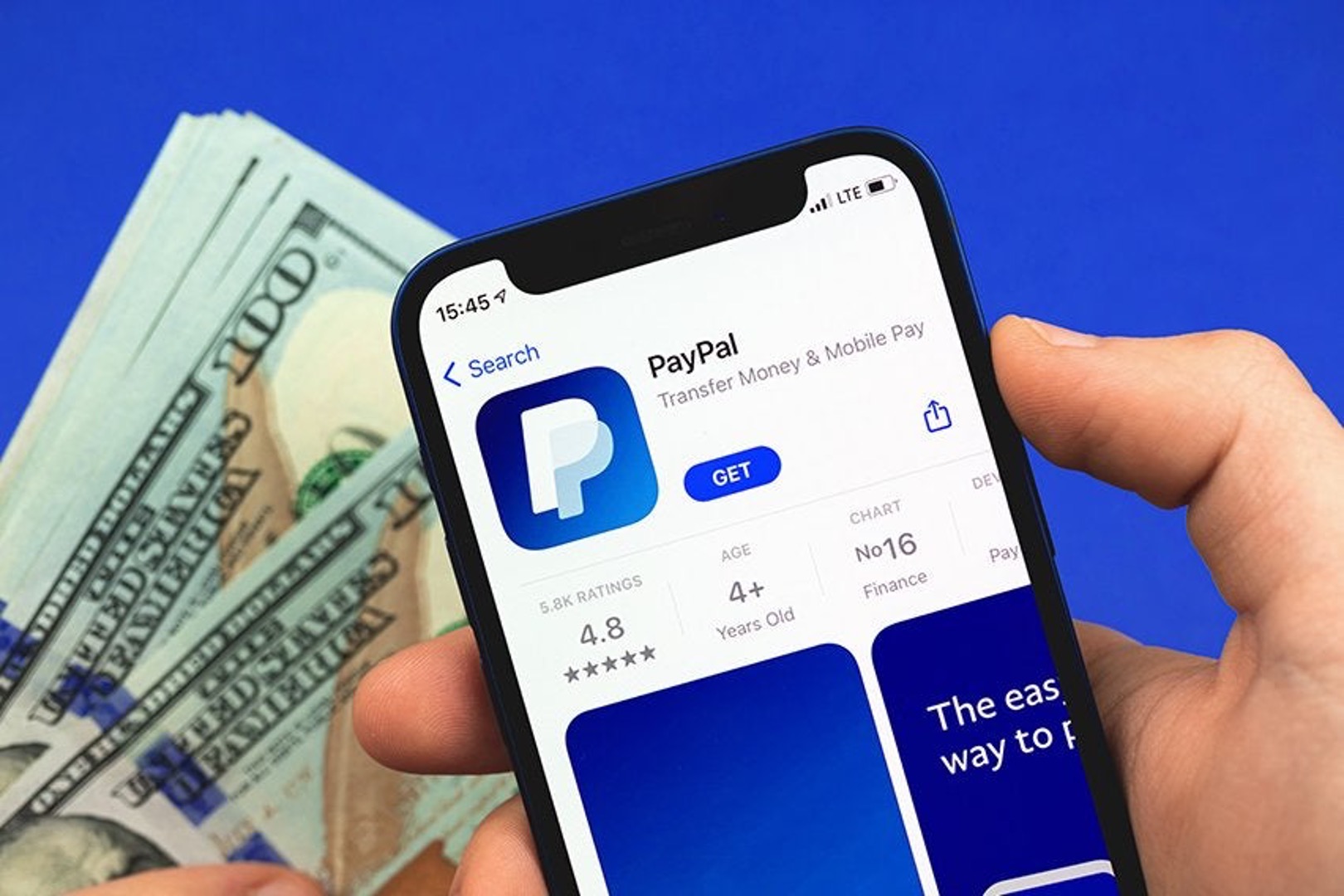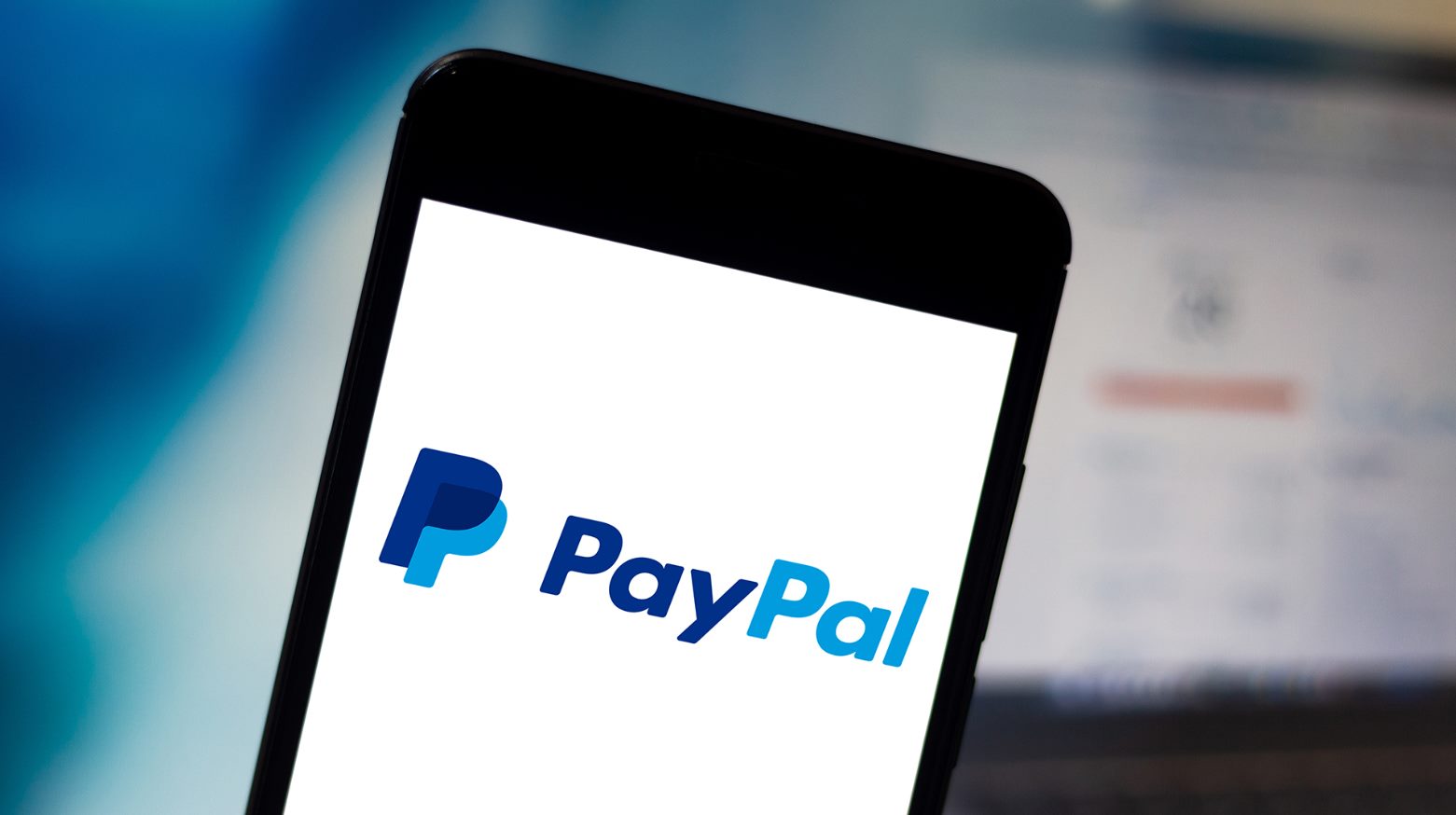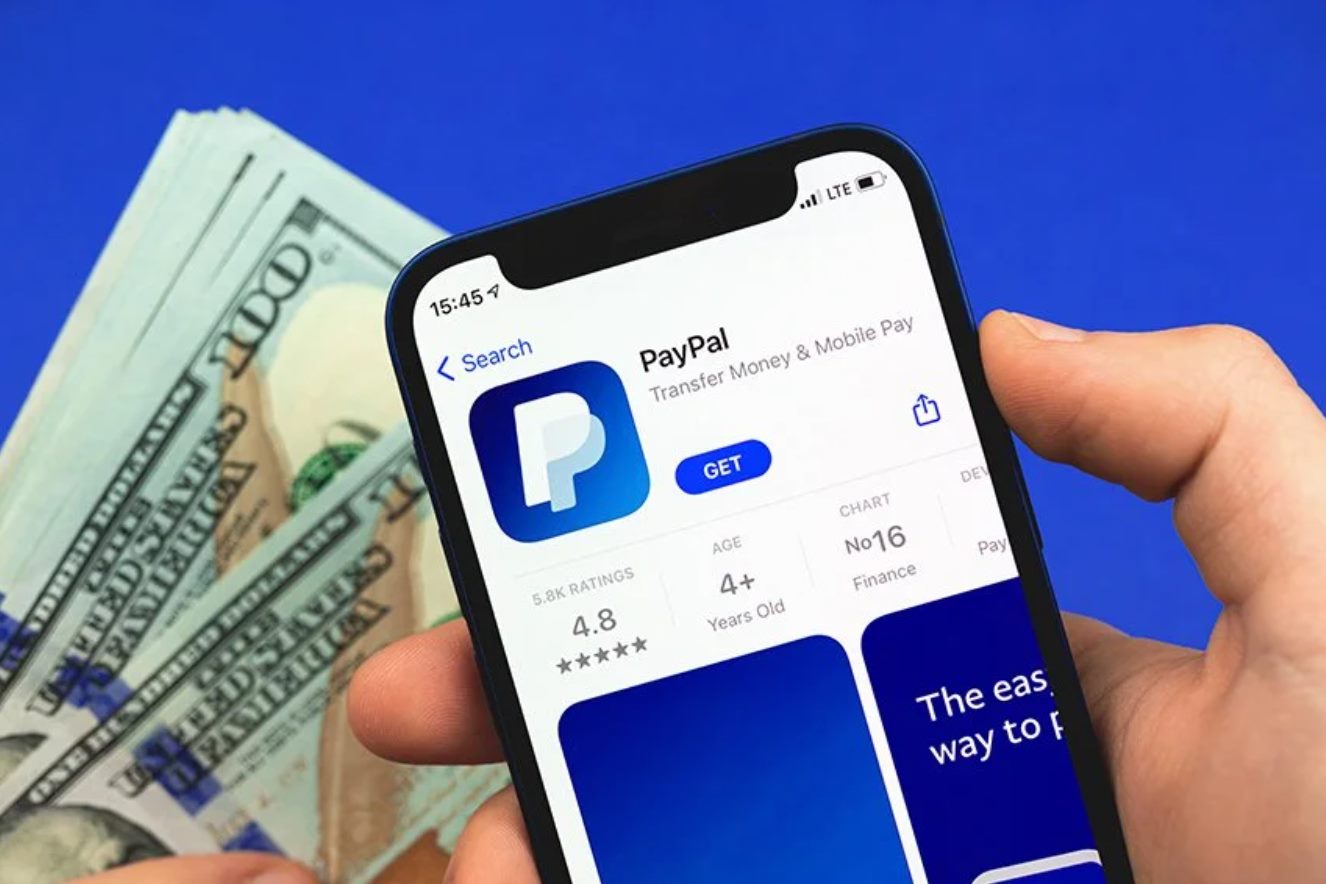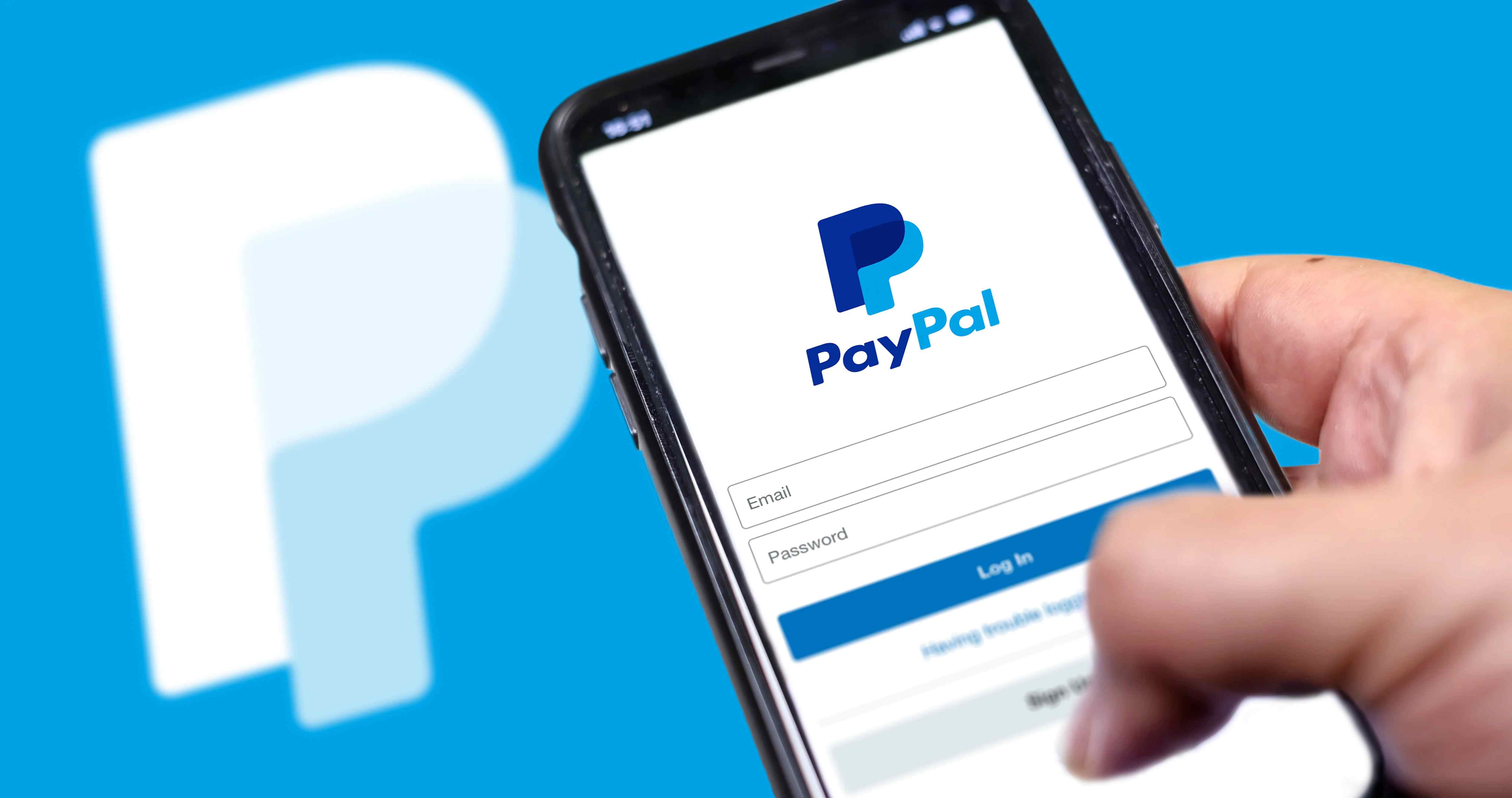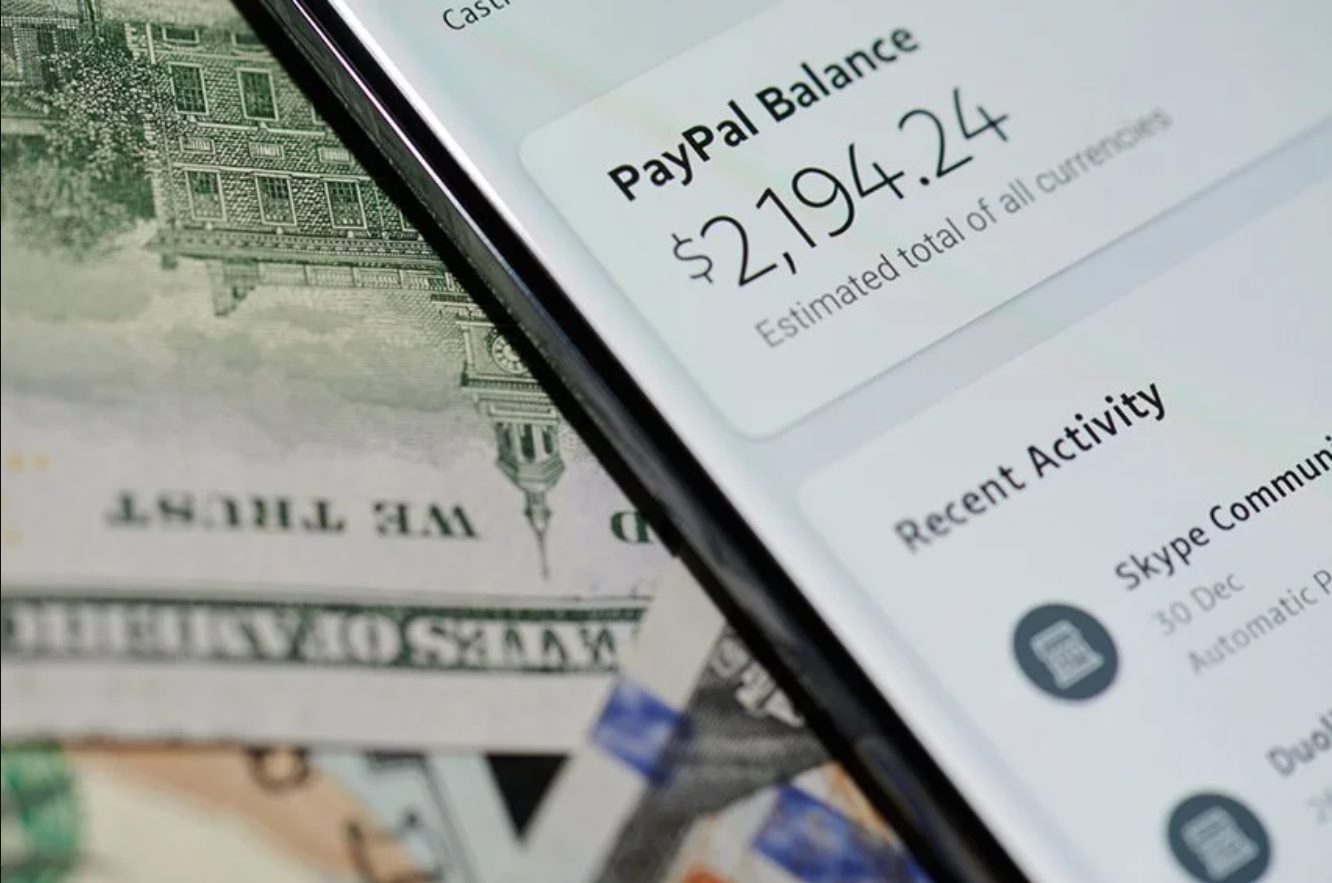Introduction
Welcome to this guide on how to get PayPal money off hold. If you’re a seller or a business owner who relies on PayPal for transactions, you’ve probably encountered situations where your funds are placed on hold. PayPal holds can be frustrating and can disrupt your cash flow. In this article, we will dive into the reasons for holds, how long they can last, and most importantly, steps you can take to remove a PayPal hold.
PayPal is a widely used payment platform that provides a convenient and secure way to send and receive money online. However, to protect both buyers and sellers, PayPal employs a series of security measures, including placing funds on hold in certain situations. While holds are intended to safeguard transactions, they can often create inconveniences for sellers who need immediate access to their funds.
Understanding the reasons behind PayPal holds is crucial for effectively dealing with them. In some cases, holds are triggered due to factors such as a sudden increase in sales volume, high-value transactions, or the presence of a new or inactive seller account. These holds serve as a precautionary measure to minimize the risk of fraud or buyer dissatisfaction.
Unfortunately, holds can be an inconvenience for sellers who need to use the funds for business expenses or to fulfill orders promptly. The duration of a PayPal hold can vary depending on several factors, such as the nature of the transaction, buyer satisfaction, and the seller’s account history. It’s important to note that PayPal holds typically last until the buyer confirms receipt of the item or until any open disputes or claims are resolved.
In the following sections, we will explore the steps you can take to remove a PayPal hold and regain access to your funds. This guide will provide insights into verifying your account information, providing proof of delivery, effectively communicating with buyers, and utilizing PayPal’s seller protection. By following these steps, you can improve your account standing and minimize the occurrence of future holds.
Understanding PayPal Holds
If you’ve ever experienced a hold on your PayPal funds, you may have wondered why it occurred and what it means for your account. Understanding PayPal holds is essential to navigating these situations with clarity and confidence.
A PayPal hold occurs when the platform temporarily restricts access to funds in a seller’s account. This hold prevents the seller from withdrawing the funds or using them for other transactions. The purpose of a hold is to minimize the risk of fraud and buyer disputes, protecting both buyers and sellers in the process.
PayPal may place a hold on funds for various reasons. One common scenario is for new sellers who do not have an established selling history. In an effort to provide a secure shopping experience for buyers, PayPal may hold funds for a certain period of time to assess the seller’s reliability and ensure a smooth transaction process.
Another reason for holds is an increase in sales volume or a sudden surge in transactions. PayPal may view this as a potential risk and may initiate a hold to verify the legitimacy of these transactions. The hold is typically lifted after a review is conducted, and the seller’s account is deemed low-risk.
High-value transactions can also trigger holds. PayPal may consider these transactions more susceptible to fraudulent activity and may impose a temporary hold to protect both parties involved. By conducting a thorough review of the transaction details, PayPal can ensure that the funds are distributed appropriately and reduce the risk of financial loss.
In some instances, holds may be initiated due to changes in a seller’s account behavior or discrepancies in transaction activity. PayPal has advanced systems that monitor and detect potentially suspicious activity. If any irregularities are flagged, a hold may be placed on the associated funds until further investigation is conducted.
PayPal holds can be a source of frustration for sellers, especially when funds are needed for immediate use. However, it’s important to remember that holds are a vital security measure implemented by PayPal to protect all parties involved in a transaction. By understanding the reasons behind holds, sellers can navigate these situations more effectively and take appropriate steps to resolve them.
Reasons for Holds
PayPal holds can be a source of inconvenience and frustration for sellers. Understanding the reasons behind holds is crucial for navigating these situations and taking appropriate steps to resolve them.
1. New Seller Accounts: PayPal often places holds on funds for new sellers with limited or no selling history. This is done to establish the credibility and reliability of the seller. As the seller builds a successful track record, holds may be gradually lifted, allowing for quicker access to funds.
2. Increase in Sales Volume: If a seller experiences a sudden increase in sales volume or a surge in transactions, PayPal may initiate a hold. This is to ensure the legitimacy of the transactions and protect both buyers and sellers from potential fraudulent activity. Once the transactions are reviewed and verified, the holds are typically released.
3. High-Value Transactions: PayPal may place holds on funds for high-value transactions as an additional security measure. Because larger transactions carry a higher risk, holding funds temporarily allows PayPal to conduct a thorough review to ensure the transaction is valid and to protect all parties involved.
4. Account Activity Changes: Any changes in a seller’s account behavior, including changes in selling patterns or sudden discrepancies in transaction activity, can trigger holds. PayPal closely monitors accounts for suspicious activity, and if any irregularities are detected, funds may be temporarily held while an investigation takes place to mitigate potential risks.
5. Dispute or Claim Resolution: If a buyer opens a dispute or files a claim against a seller, PayPal may place a hold on the funds related to that specific transaction. The hold is initiated to prevent the seller from withdrawing funds while the dispute or claim is being resolved. Once the dispute or claim is settled, funds are released in accordance with the outcome.
While holds can be frustrating, it’s important to recognize that PayPal implements them to protect all parties involved in the transaction process. By understanding the reasons behind holds, sellers can take steps to prevent or resolve them more effectively, ensuring a smoother and more secure experience with PayPal.
How Long Can a Hold Last?
As a seller, one of the most pressing concerns when a PayPal hold is placed on your funds is the duration of the hold itself. While the duration can vary depending on several factors, it’s important to have a general understanding of how long a hold can last.
First and foremost, the duration of a PayPal hold depends on the specific circumstances of the transaction. Holds are typically released once the buyer confirms receipt of the item or the status of any open disputes or claims is resolved. This means that the length of the hold may vary depending on the timing and response of the buyer.
In most cases, PayPal holds last until the buyer either receives the item or acknowledges its receipt. This is particularly relevant for items that require shipping or physical delivery. Once the buyer confirms that they have received the item and are satisfied with the transaction, PayPal typically releases the held funds within a few days.
If a dispute or claim is opened by the buyer, the hold may last until the issue is resolved. PayPal allows a specific timeframe for buyers and sellers to communicate and address the dispute or claim. This process can take a few weeks or longer, depending on the complexity of the situation and the cooperation of both parties.
In instances where there are no disputes or claims, PayPal typically releases the funds after a specified time period. The length of this period may vary depending on various factors, including the seller’s account history, the type of transaction, and the overall risk associated with the particular sale.
It’s important to note that PayPal provides estimated release dates for held funds in the transaction details. These dates are based on the average timeframes for similar transactions and serve as a guideline for when the funds are likely to be released. While it’s not a guarantee, it can provide sellers with a better understanding of the approximate duration of the hold.
Ultimately, the length of a PayPal hold is influenced by a combination of factors, including the buyer’s actions, the resolution of any disputes or claims, and the specific circumstances of the transaction. By keeping open lines of communication with buyers and actively addressing any potential issues, sellers can help ensure that holds are resolved efficiently, minimizing any impact on their cash flow.
Steps to Remove a PayPal Hold
If you find yourself with funds held in your PayPal account, it’s important to take the necessary steps to remove the hold and regain access to your money. While the specific process may vary depending on the nature of the hold and the circumstances of the transaction, there are general steps you can take to resolve the issue.
1. Verify Your Account Information: Ensure that your PayPal account is fully verified with accurate and up-to-date information. Complete any necessary steps to verify your identity, such as providing your Social Security number or confirming your bank account and address. A verified account is seen as more trustworthy by PayPal and may help expedite the release of held funds.
2. Provide Proof of Delivery: If the hold is related to a transaction that involved shipping or delivery of goods, provide proof of delivery to the buyer. This can include tracking numbers, shipping receipts, or any other documentation that confirms the successful delivery of the item to the buyer’s address. By offering concrete evidence of fulfillment, you can demonstrate to PayPal that the transaction was completed as agreed.
3. Respond to Disputes and Claims: If a buyer has opened a dispute or filed a claim against you, promptly respond to the issue and provide any necessary information or documentation requested by PayPal. Engage in open and clear communication with the buyer to address their concerns and attempt to resolve the dispute amicably. Resolving disputes in a timely and satisfactory manner can help expedite the release of held funds.
4. Communicate with the Buyer: Keep the lines of communication open with the buyer throughout the process. Respond promptly to their messages and address any questions or concerns they may have. By establishing a dialogue and demonstrating your willingness to work towards a resolution, you can build trust and potentially influence the buyer’s decision to release the hold on the funds.
5. Utilize PayPal’s Seller Protection: Familiarize yourself with PayPal’s Seller Protection policies and ensure that you meet all the necessary requirements to qualify for protection. Seller Protection is a program offered by PayPal that helps protect sellers from certain types of fraudulent transactions. By understanding and adhering to the guidelines, you can mitigate potential risks and potentially avoid holds on your funds.
6. Improve Your Account Standing: Maintaining a good standing with PayPal can help reduce the occurrence of holds in the future. This includes maintaining a positive feedback rating, providing excellent customer service, and promptly resolving any issues that may arise. By building a strong reputation as a reliable seller, you can enhance your overall account standing and minimize the likelihood of holds on your funds.
By following these steps and actively working towards a resolution, you can increase the chances of removing a PayPal hold and accessing your funds more quickly. It’s important to be proactive, communicate effectively, and provide any necessary documentation to support your case. While the process may require some patience, taking these steps can help you navigate the hold removal process with confidence.
Verifying Your Account Information
One crucial step in resolving a PayPal hold is to ensure that your account information is fully verified and up to date. Verifying your account provides PayPal with the necessary information to confirm your identity and enhance the security of your transactions. Here are the steps to verify your account information:
1. Confirm Your Email Address: Start by verifying your email address associated with your PayPal account. PayPal will send a confirmation email to the address you provided during the registration process. Follow the instructions in the email to complete the verification process.
2. Provide Accurate Personal Information: Make sure that your personal information, such as your full name, address, and contact details, are accurate and reflect your current information. This includes updating your address if you’ve recently moved. Incorrect or outdated personal information can hinder the verification process and lead to holds on your funds.
3. Verify Your Bank Account: Connecting and verifying your bank account with PayPal adds an extra layer of security and allows for smoother fund transfers. To verify your bank account, link it to your PayPal account and follow the instructions to confirm your ownership. PayPal may make small deposits to your bank account that you will need to verify by providing the exact amounts.
4. Confirm Your Debit or Credit Card: If you have a debit or credit card linked to your PayPal account, ensure that it is verified. Verification usually involves a process of confirming your card details or authorizing a small transaction. Verifying your card helps establish your identity and can expedite the removal of holds on your funds.
5. Provide Legal Documentation if Needed: In some cases, PayPal may require additional documentation to verify your account. This can include providing a copy of your identification card, driver’s license, or passport. If requested, upload the required documents through your PayPal account’s verification section. Ensure that all documents are clear, legible, and meet the specified requirements.
6. Maintain Good Account Standing: Regularly review your account activity and address any issues promptly. This includes resolving disputes, responding to claims, and maintaining a positive feedback rating. A good account standing helps build trust with PayPal and can minimize the likelihood of future holds on your funds.
By verifying your account information, you demonstrate to PayPal that you are a legitimate and trustworthy user. This increases the chances of having holds on your funds removed more quickly. Remember to keep your information up to date to ensure smooth transactions and minimize the risk of holds in the future.
Providing Proof of Delivery
One effective way to remove a PayPal hold on your funds is by providing proof of delivery for transactions that involve shipping or delivery of goods. By offering verifiable evidence that the item was successfully delivered to the buyer, you can demonstrate to PayPal that the transaction was completed as agreed. Here are the steps to providing proof of delivery:
1. Keep Records of Shipping: Retain detailed records of all shipping transactions, including tracking numbers, shipping receipts, and any other relevant documentation. These records serve as the backbone of your proof of delivery, providing a timestamped and verifiable trail of the shipment.
2. Verify Delivery Status: Monitor the status of your shipped items to ensure they reach their intended destinations. If a buyer claims non-receipt of an item, verify the delivery status using the tracking number provided by the shipping carrier. This information will be key in proving that the item was delivered as intended.
3. Confirm Certified Delivery or Signature Confirmation: Whenever possible, opt for certified delivery or signature confirmation services. These services require the buyer or an authorized individual to sign for the delivery. By obtaining a signature, you have tangible evidence that the package was received by the intended recipient.
4. Document Communication with Buyer: Keep a record of any communication with the buyer regarding the delivery of the item. This includes email correspondence or messages exchanged through the PayPal platform. In case of a dispute, these records can serve as additional evidence to support your claim that the item was successfully delivered.
5. Respond Promptly to Disputes or Claims: If a buyer opens a dispute or files a claim regarding the delivery of an item, respond promptly and provide the necessary documentation to support your case. This includes providing tracking information, proof of shipment, and any other relevant evidence. Engage in clear and concise communication with the buyer and PayPal to ensure your side of the story is well-documented.
6. Maintain Organized Documentation: Keep all shipping-related documentation organized and easily accessible. This will allow you to quickly gather the necessary evidence when addressing holds or disputes. Consider using a digital filing system or cloud storage to store and organize electronic copies of shipping receipts and other relevant documents.
By providing clear and verifiable proof of delivery, you can strengthen your case for removing a hold on your PayPal funds. The key is to maintain comprehensive records, communicate effectively with the buyer and PayPal, and respond promptly to any disputes or claims that may arise. Remember, the objective is to demonstrate that the item was successfully delivered to the buyer, resolving any doubts and ensuring the release of your held funds.
Responding to Disputes and Claims
When a buyer opens a dispute or files a claim against a transaction, it is essential to respond promptly and effectively. Properly addressing disputes and claims can help resolve issues and potentially lead to the removal of holds on your PayPal funds. Here are the steps to responding to disputes and claims:
1. Review the Details: Carefully read through the buyer’s dispute or claim and understand the specific issue they are raising. Pay attention to any evidence or documentation they may have provided to support their claim. This will allow you to formulate a well-informed and appropriate response.
2. Stay Calm and Professional: Even if you disagree with the buyer’s claim, it is important to maintain a calm and professional demeanor when responding. Keep your tone respectful and avoid any confrontational language. Approach the situation as an opportunity to resolve the issue amicably.
3. Gather Documentation: Collect any relevant documentation to support your case and refute the buyer’s claim. This can include order confirmations, shipment receipts, tracking information, communication records, and any other evidence that showcases your adherence to the agreed-upon terms of the transaction.
4. Respond Promptly: Timeliness is key in resolving disputes and claims. Respond to the buyer’s claim as soon as possible to demonstrate your commitment to addressing the issue. Delayed responses can be perceived negatively and may prolong the resolution process.
5. Provide Clear and Concise Explanations: Clearly articulate your perspective and provide a detailed explanation of the transaction, highlighting any relevant details that support your case. Address each point of the buyer’s claim individually and offer a thorough rebuttal supported by factual evidence.
6. Offer Solutions: Propose practical and fair solutions to the buyer to resolve the dispute. This may include offering a refund, arranging for a return of the item, or finding a mutually agreeable compromise. Showing a willingness to find a resolution demonstrates your commitment to customer satisfaction.
7. Communicate with PayPal: Keep PayPal informed throughout the dispute resolution process. Respond promptly to any inquiries or requests for additional information from PayPal’s dispute resolution team. Cooperating with PayPal shows your commitment to resolving the issue in a fair and transparent manner.
8. Escalate if Necessary: If you have provided evidence that supports your case but the dispute remains unresolved, you may need to escalate the matter to PayPal for further review. Provide any additional information requested by PayPal and cooperate fully during the escalation process.
Remember, maintaining clear and efficient communication with the buyer and PayPal is crucial for resolving disputes and claims successfully. By approaching the situation with professionalism, providing compelling evidence, and offering reasonable solutions, you increase the chances of having the hold on your funds removed and reaching a satisfactory resolution for all parties involved.
Communicating with the Buyer
Clear and effective communication with the buyer is essential when it comes to resolving issues and potentially removing holds on your PayPal funds. By maintaining open lines of communication, you can address concerns, provide clarifications, and work towards a mutually beneficial resolution. Here are some key strategies for effectively communicating with the buyer:
1. Respond Promptly: Timely communication is crucial when dealing with disputes or issues raised by the buyer. Aim to respond to their messages or inquiries promptly, preferably within 24 to 48 hours. Delayed responses can lead to frustration and escalate the situation further.
2. Remain Professional and Courteous: Always maintain a professional and courteous tone when communicating with the buyer, regardless of the circumstances. Avoid using confrontational language or getting defensive. Keep your tone respectful and focus on finding a resolution.
3. Listen and Understand: Take the time to fully understand the buyer’s concerns or complaints. Listen attentively to their perspective and acknowledge their frustrations or grievances. Understanding their point of view will allow you to address their concerns more effectively.
4. Provide Clear and Concise Information: Be clear and concise in your communication with the buyer. Use simple language and avoid technical jargon. Provide all necessary information to address their concerns and offer clear explanations of any relevant policies or procedures.
5. Offer Solutions: Instead of dwelling solely on the problem, focus on finding solutions that meet the buyer’s needs while protecting your own interests. Offer practical and fair options that can help resolve the issue and potentially result in a positive outcome for both parties.
6. Keep Records of Communication: Document all communication with the buyer, including emails, messages, and any other correspondence. This creates a paper trail that can be useful if the dispute escalates or if you need to provide evidence to PayPal during the resolution process.
7. Escalate to PayPal if Necessary: If your attempts to resolve the issue directly with the buyer are unsuccessful, and you believe PayPal’s intervention is necessary, escalate the matter by opening a dispute through the PayPal Resolution Center. Clearly explain the situation and provide any supporting documentation to aid in the resolution process.
Remember, effective communication with the buyer can greatly impact the outcome of a dispute or issue. By being proactive, respectful, and attentive to their concerns, you can work towards a resolution that satisfies both parties and improves the likelihood of having the hold on your funds removed.
Utilizing PayPal’s Seller Protection
PayPal offers a valuable feature called Seller Protection, designed to safeguard sellers against certain types of fraudulent transactions. Understanding and utilizing Seller Protection can help protect your funds and minimize the occurrence of holds. Here’s how you can make the most of PayPal’s Seller Protection:
1. Familiarize Yourself with the Policy: Take the time to familiarize yourself with the terms and conditions of PayPal’s Seller Protection policy. Understand the specific criteria that must be met in order to qualify for protection. This includes requirements related to shipping, proof of delivery, and eligible transaction types.
2. Meet the Eligibility Requirements: Ensure that you meet all the eligibility requirements set by PayPal to qualify for Seller Protection. This may include properly packaging and shipping items, ensuring the shipping address matches the one provided by PayPal, and providing valid proof of delivery for certain transactions.
3. Provide Detailed Descriptions and Documentation: When listing items for sale, provide accurate and detailed descriptions. This can help prevent misunderstandings and potential claims from buyers. Additionally, keep records of any relevant documentation, such as invoices, receipts, and communication with the buyer, to support your case in case of any disputes.
4. Follow Appropriate Shipping Practices: Adhere to best practices when shipping items to buyers. Use reliable shipping methods that provide tracking and delivery confirmation. By utilizing trusted carriers and obtaining proof of shipment, you can strengthen your case and increase your chances of qualifying for Seller Protection.
5. Respond to Unauthorized Transaction Claims: If a buyer files an unauthorized transaction claim, promptly respond to the claim and provide any necessary documentation to prove that the transaction was legitimate. Cooperate fully with PayPal’s investigation and provide any requested evidence promptly.
6. Keep Communication Records: Maintain thorough records of all communication with buyers. This includes any messages exchanged through the PayPal platform, email correspondence, and notes from phone calls. These records can serve as valuable evidence in case of disputes and claims.
7. Understand the Coverage Limitations: While Seller Protection provides valuable coverage, it’s important to understand its limitations. Certain types of transactions, such as transactions involving vehicles, custom-made items, or intangible goods, may not be eligible for protection. Review PayPal’s policy to ensure you fully understand the coverage limitations.
By familiarizing yourself with and utilizing PayPal’s Seller Protection, you can add an extra layer of security to your transactions and minimize the occurrence of holds on your funds. Implementing best practices, following the guidelines, and providing necessary documentation can help ensure a smoother experience and protect your business as a seller.
Improving Your Account Standing
Having a strong account standing with PayPal is crucial for minimizing the occurrence of holds on your funds and maintaining a smooth transaction process. By actively working to improve your account standing, you can build trust with PayPal and potentially reduce the likelihood of holds. Here are some steps you can take to enhance your account standing:
1. Provide Excellent Customer Service: Providing exceptional customer service is key to maintaining a good account standing. Respond promptly to buyer inquiries, address any concerns or issues, and strive to exceed customer expectations. By prioritizing customer satisfaction, you can foster positive feedback and help build a solid reputation as a reliable seller.
2. Maintain a Positive Feedback Rating: Encourage buyers to leave positive feedback by providing exceptional products and service. Aim to maintain a high feedback rating by resolving any negative feedback or disputes in a professional and satisfactory manner. A positive feedback rating helps establish trust with both PayPal and potential buyers.
3. Comply with Policies and Guidelines: Familiarize yourself with PayPal’s policies and guidelines and ensure that you adhere to them in all your transactions. This includes guidelines related to restricted items, prohibited activities, and acceptable use of the PayPal platform. By following these rules, you demonstrate your commitment to being a responsible and compliant seller.
4. Ship Items Promptly and with Care: Ship items promptly after receiving payment, and ensure they are packaged securely and adequately. Utilize reliable shipping services that provide tracking information and consider adding insurance for higher-value items. Timely and reliable shipping practices contribute to buyer satisfaction and minimize the likelihood of disputes or claims.
5. Keep Records and Documentation Organized: Effective record-keeping is essential for maintaining a good account standing. Keep all relevant records, such as transaction details, shipping receipts, and communication records, organized and easily accessible. This allows for efficient handling of any issues that may arise and provides supporting evidence when needed.
6. Regularly Review and Update Account Information: Regularly review your account information to ensure it is accurate and up to date. Verify that your contact information, including your email address and phone number, is correct. It’s also important to keep your bank account and credit card information updated to ensure smooth transactions.
7. Monitor and Address Disputes or Claims Promptly: Actively monitor your PayPal account for any open disputes or claims and address them promptly. Respond to any inquiries from PayPal’s dispute resolution team and provide any requested information or documentation. Timely resolution of disputes demonstrates your commitment to problem-solving and can help maintain a positive account standing.
By actively working towards improving your account standing, you demonstrate your commitment to being a responsible and trustworthy seller. Through excellent customer service, adherence to policies, efficient shipping practices, and timely resolution of issues, you can build a solid reputation and minimize the occurrence of holds on your PayPal funds.
Conclusion
Dealing with holds on your PayPal funds can be frustrating, but following the right steps can help remove them and restore access to your money. Understanding the reasons for holds, knowing how long they can last, and taking appropriate actions can make a significant difference in resolving the issue.
Verifying your account information, providing proof of delivery, responding to disputes and claims, communicating effectively with the buyer, utilizing PayPal’s Seller Protection, and improving your account standing are all crucial steps to navigate the hold removal process successfully.
Remember that open and clear communication with the buyer and PayPal is key to resolving disputes and claims. By staying professional, providing appropriate documentation, and offering practical solutions, you can work towards a mutually beneficial resolution.
PayPal’s Seller Protection is an important tool that can provide additional security for your transactions. Understanding the policy, meeting eligibility requirements, and following best practices can enhance your protection against fraudulent activities.
Improving your account standing involves providing excellent customer service, maintaining a positive feedback rating, complying with policies and guidelines, shipping items promptly and securely, keeping documentation organized, and addressing disputes or claims promptly.
By implementing these strategies, you can enhance your PayPal experience, minimize holds on your funds, and promote smoother transactions as a seller. Remember, every situation may differ, so adapt the steps to your specific circumstances, and seek assistance from PayPal’s customer support if needed. With patience, proactive actions, and effective communication, you can navigate holds and maintain a thriving seller account on PayPal.







